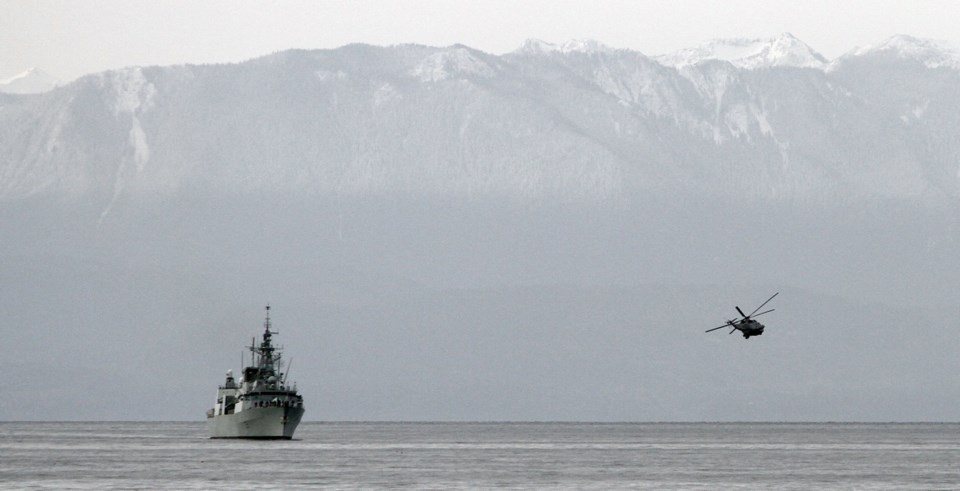Canadian navy headquarters has deep-sixed suggestions by defence analysts that Canada move more of its fleet to Esquimalt in response to the buildup of the Chinese navy.
While the U.S. navy plans to put 60 per cent of its assets on the west coast by 2020, there are no plans for Canada to bolster its naval presence on the Pacific, said Lt. Mark Fifield of Maritime Staff Headquarters in Ottawa.
The current breakdown meets Canada’s strategic and operational requirements, he said, with Halifax ships closer to the Middle East and the Caribbean, where operations will likely remain in the coming years. Fifield’s lengthy statement to the Times Colonist did not mention China or Asia.
Ships can be deployed to any location, regardless of where they are based, Fifield added.
The navy’s 33 warships, submarines and coastal defence vessels are “divided evenly” between the west and east coasts, Fifield said. The 15-vessel Pacific fleet comprises five frigates, a destroyer, two submarines, a replenishment ship and six coastal defence vessels. There are 18 vessels on the Atlantic coast: seven frigates, two destroyers, two submarines, a replenishment ship and six coastal defence vessels.
But when defence analyst David S. McDonough of the University of B.C. looks at destroyers, frigates, and submarines — what he considers warships capable of combat on open oceans — he sees a split closer to 60-40.
The navy’s response doesn’t surprise the analyst, who says it makes “some sense” given recent Mideast deployments — though he doesn’t see that area as Canada’s long-term focus.
The U.S. plan to move its vessels to the west coast is part of its plan to make this “America’s Pacific Century.” Japan and Australia have also bolstered their fleets in light of China’s territorial disputes with the Philippines and Japan.
Canada is not in danger from China, and the U.S. isn’t “terribly interested” in having Canadian help in the Pacific right now — but in a decade, it may need other countries to maintain its Pacific capabilities, McDonough said.
He thinks Canada’s “mid-sized navy” is large enough and budget constraints preclude its expansion.
But changing where the navy locates its vessels would have economic and political repercussions, McDonough said, citing job losses in Halifax as one example. Both cities boast 2,000 naval civilian personnel, but Esquimalt has roughly 4,000 military members compared to 5,000 in Halifax.
But the potential threat makes submarines and destroyers, which have air-defence capabilities, more useful on the west coast, McDonough said. Arctic patrol vessels are better suited to Halifax because of its proximity to the North — and could offer compensation for the loss of fighting vessels in a rebalance, he said.
“Area-air defence and anti-submarine warfare are the two capabilities that Canada needs in the long-term in the Pacific,” he said. “So even just moving one destroyer and one submarine to the Pacific would help.”



